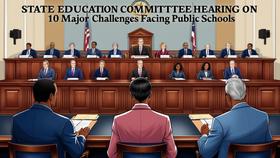Quick Stats (2025)
- School Type: Alternative school
- Grades: 7-12
- Graduation Rate: <50%
- Source: National Center for Education Statistics (NCES), MO Dept. of Education
School Overview
School Rankings
Student : Teacher Ratio
n/a
12:1
Graduation Rate
(10-11)<50%
82%
School Statewide Testing
School District Name
Source: National Center for Education Statistics (NCES), MO Dept. of Education
Profile last updated: 02/09/2025
Frequently Asked Questions
What is the graduation rate of East Recep/diag Corr Cent/acad?
The graduation rate of East Recep/diag Corr Cent/acad is 50%, which is lower than the Missouri state average of 82%.
What grades does East Recep/diag Corr Cent/acad offer ?
East Recep/diag Corr Cent/acad offers enrollment in grades 7-12
What school district is East Recep/diag Corr Cent/acad part of?
East Recep/diag Corr Cent/acad is part of Department Of Corrections School District.
School Reviews
Review East Recep/diag Corr Cent/acad. Reviews should be a few sentences in length. Please include any comments on:
- Quality of academic programs, teachers, and facilities
- Availability of music, art, sports and other extracurricular activities
Recent Articles

What Is A Charter School?
Explore the world of charter schools in this comprehensive guide. Learn about their history, how they operate, and the pros and cons of this educational innovation. Discover key facts about charter schools, including admission policies, demographics, and funding, as well as what to look for when considering a charter school for your child.

10 Reasons Why High School Sports Benefit Students
Discover the 10 compelling reasons why high school sports are beneficial for students. This comprehensive article explores how athletics enhance academic performance, foster personal growth, and develop crucial life skills. From improved fitness and time management to leadership development and community representation, learn why participating in high school sports can be a game-changer for students' overall success and well-being.

February 05, 2025
Understanding the U.S. Department of Education: Structure, Impact, and EvolutionWe explore how the Department of Education shapes American education, from its cabinet-level leadership to its impact on millions of students, written for general audiences seeking clarity on this vital institution.





